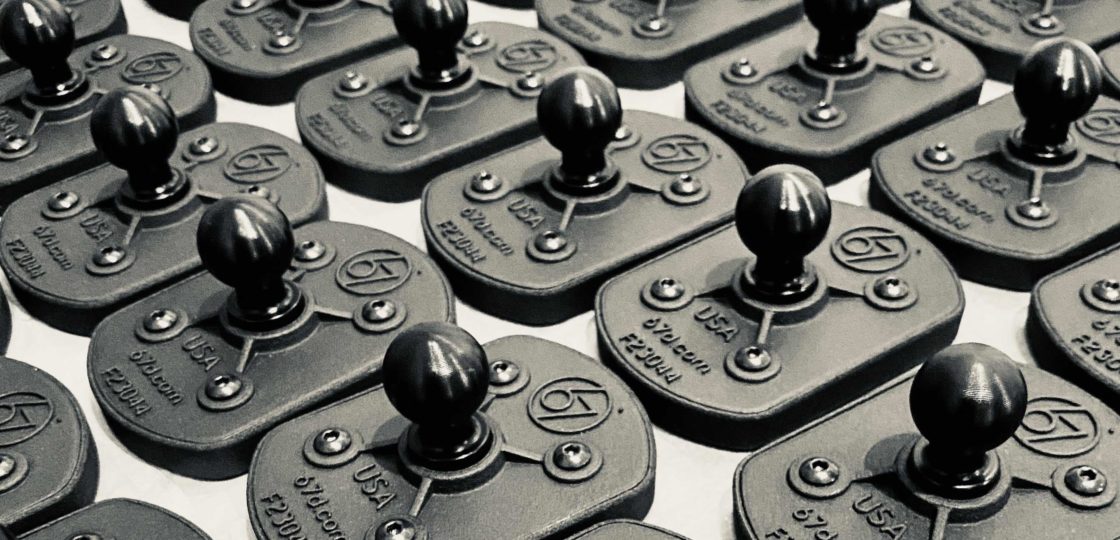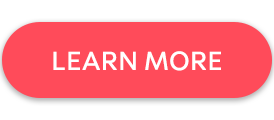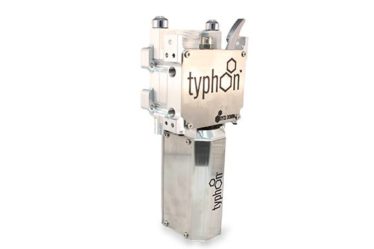
The story of every Shapeways product begins with that spark of an idea, a design, a model—and the industrial 3D print begins as soon as it is assigned to a machine, a tray, and is packed strategically with what could be hundreds or even thousands of other parts.
If it’s really true that doing puzzles on a routine basis continues to raise intelligence levels, then the production engineers at Shapeways should continue to shine with profound brilliance—after all, packing parts for 3D printing, also known as ‘nesting,’ is often compared to the 80’s game Tetris with good reason. The satisfaction found in moving pieces around is similar as 3D print builds are packed for success with the assistance of colorful automated visualization. And while the addiction of the videogame is what keeps players coming back for more as they attempt to keep order within, the quality parts produced after ‘smart packing’ are what bring Shapeways customers back time and time again too.
Games like Tetris and nesting for 3D printing share a few things in common too: goal-setting, strategy, and concentration. The stakes are a lot higher in industrial manufacturing though. For 3D printing engineers at Shapeways nesting 3D prints together, the number one goal is quality, whether in manufacturing a detailed model for an architectural presentation or a high-performance automotive part. Each build is different, meaning that each puzzle in terms of nesting is unique too.
Leveraging Software for Intelligent Nesting and Orientation
Nesting used to be done manually, but now Shapeways leverages proprietary purpose-built software, which includes 3D printing nesting software, ensuring quality and consistent 3D printed parts. Streamlined packing of parts reduces the height of the build platform, saves materials, and speeds up production overall.
Nesting software rotates the parts and condenses them as tightly as possible too. Balance is very important, and different shapes and sizes of parts have to be taken into consideration—especially when they are fragile and may need to be placed at the top, rather than sitting under powder.
“The software does the hard thinking for us in terms of whether or not a part fits into the spaces available in a build tray,” said Zach Dillon, User Application Team Lead at Shapeways.
Orientation plays a large role in nesting, and in some cases requires a communicative effort between Shapeways and the customer. Although online customization options are available for materials like Nylon 12 [Versatile Plastic], the User Application team at Shapeways can work with customers who have requests regarding orientation, as well as concerns about what type of materials to use—and when to use 3D printing over conventional manufacturing—or vice versa.
What 3D Printing Technologies Use Nesting?
Nesting is used in powder-based 3D printing technologies that don’t require support structures, to include Selective Laser Sintering (SLS) and Multi Jet Fusion (MJF). The un-sintered powder surrounding parts during printing bolsters them, acting as a support system, leaving users unfettered in design choices as they do not have to worry about adding support structures, complicating packing and post-processing further.

Selective Laser Sintering
Yielding higher accuracy and repeatability than most techniques, selective laser sintering (SLS) is a powder-based 3D printing process performed from the small to large scale, often requiring many parts to be nested in one build. SLS technology is one of the most popular and powerful industrial methods being used in additive manufacturing today, with thin layers of powder dispersed over the build platform. A CO2 laser then traces the pattern of the 3D design in the powder, continuing to fuse each consecutive layer together until the product is complete.
Shapeways offers Nylon 12 [Versatile Plastic], PA11, and TPU with SLS 3D printing.
Multi Jet Fusion
Multi Jet Fusion (MJF) is another powder bed fusion 3D printing process, developed by HP Inc. as a progression from their experience in inkjet technology. As powder is deposited across the build area, both fusing and detailing agents help build the 3D printed structure, with each layer fused together via infrared heat. Again, with the ability to avoid support structures, and pack builds with many parts, much higher production runs are possible.
Shapeways offers both MJF Plastic PA12 and MJF Plastic PA12 Glass Beads with MJF 3D printing.
Working with the User Application Team to Optimize Production
The key to quality is in making sure each part is situated in the 3D print build tray so all 3D printed parts are created with the utmost consistency and accuracy. When Shapeways customers print in large volumes, being able to work directly with the User Application team to optimize nearly every aspect of production is a huge benefit.
“We have to take everything into consideration from how larger parts will affect others around them to how they will all be unpacked and cleaned,” said Dillon.
“Building these trays and filling them with parts can almost be an art form,” said Dillon. “Each layer must be homogenous, especially in terms of temperature. There can be a fight against heat. You don’t want to be dealing with one layer in a build that is lower-sintered and another that is higher-sintered right next to one another.”
In working with the UA team, companies like BeeHero, 67 Designs and Tilt Hydrometer are able to optimize their production and reach a collaborative goal in terms of what materials and technology to use:

- The Israeli bee pollination experts at BeeHero chose manufacturing with Shapeways using Nylon 12 and SLS technology for comparable quality over conventional technology like injection molding, looking toward added texture, strength, and flexibility in parts. Because their own customers are so invested in very expensive technology for pollination—and products like the BeeHero smart hives—quality in parts is critical.
- For 67 Designs, SLS technology with Nylon 12 [Versatile Plastic] was also the ticket to 3D printing customized high-end vehicle accessories. CEO Gavin Stener is dedicated to 3D printing and plans to use the technology in a production environment for as long as possible, even as demand for his sturdy mounting devices for off-roading vehicles continues to grow.
- Tilt Hydrometer was drawn to working with Shapeways because of the ability to prototype with ease using Nylon 12 [Versatile Plastic] to make well over a hundred prototypes to get their 3D printed free-floating hydrometer exactly right, with thousands of beer lovers depending on the devices to measure sugar during fermentation.
“In manufacturing, we are bringing these parts into the real world—out of a safe digital space where no physics have been applied yet such as gravity,” said Dillon. “Ultimately it would be great if we could just say ‘one printer, one part’ but that would be unrealistically expensive just for it to be printed by itself. There has to be a balance between machine efficiencies and quality.”
Many current customers have been working with Shapeways since the early days, and these businesses have grown together over time—along with enjoying access to new materials, technology, and options for customization. Find out more about how Shapeways can collaborate with your company.

Shapeways has worked with over a million users to help 3D print over 20 million products in 90+ different materials and finishes. Enjoy the benefits of advanced technology and a wide range of materials for printing your creations with accuracy, complex detail, and no minimum or limits in terms of mass customization or single part orders. Read about case studies, find out more about Shapeways solutions, and get instant quotes here.

